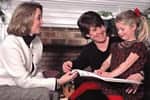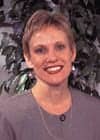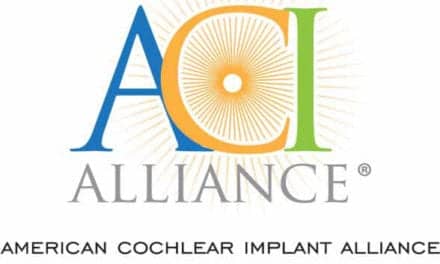Courses offering training for everyday living and vocational skills are available for hard of hearing and deaf adults through a specialized American School for the Deaf program.

Since 1968, the Adult Vocational Services (AVS) division of the American School for the Deaf (ASD), West Hartford, Conn, has been teaching hard of hearing and deaf adults a trade, allowing these individuals to be employed and be independent. Originally spun off from the ASD vocational programs as an effort to help ASD graduates maintain their employment, the program now helps hard of hearing and deaf individuals throughout Connecticut and beyond.
What began as additional vocational courses in 1968 has grown to include assessment, training, job coaching, and independent living skills training. “Over the years, the need for postsecondary skill training became more apparent as the number of non-college-bound [ASD] graduates increased,” says Sandra Inzinga, director of AVS. “AVS was able to establish skill training programs in connection with the [Connecticut] state vocational rehabilitation agency, to assist people to prepare for employment.” The three to five adults who go through the occupational skills program annually can come from a number of referral sources in addition to ASD and the state vocational rehabilitation agency, including the Department of Mental Health and Addiction Services, Department of Mental Retardation, Board of Education Services for the Blind, Department of Children and Families, and private providers and funders.
The training process consists of an assessment that can be done either at ASD or in the community, occupational skills training, and work experience.
When students start the program, they are helped to set realistic goals for themselves through career counseling that identifies interests, skill strengths, and deficits, clarifying their options and setting career goals. “A person’s success is measured by their own individual parameters, determined by the individual barriers they have to overcome,” says Inzinga. “Everyone who has come through our program has been a ‘winner.’”
AVS stresses a total communication approach that includes sign language, speech reading, aural, and oral communication. There is a simple reason for this. “AVS is guided by the principle that all modes of communication…are encouraged to ensure that communication is comfortable and effective for each individual whom we serve,” says Inzinga.
Though the program is open to any adult regardless of age, most are between 20 and 30. They can attend the program for as long as they need to and a funding source is available. About 1,000 students have gone through the program. Many of the AVS students are immigrants who need assistance in learning English and honing their communication skills. AVS classes are held in the ASD vocational facilities alongside ASD students. Vocational training is offered in a number of skill areas, including food service, woodworking, auto body, printing, desktop publishing, graphic design, and maintenance. The most popular skill program is food service. Individualized training experiences are also available through other trade schools, vocational schools, and businesses.
For those students who live too far away to commute, AVS offers housing on the ASD campus during their tenure in the program. AVS also offers on and off campus work experiences for ASD students.
AVS is more than a vocational program. Participants also learn how to find a job and live in the community.
More Than Job Training
AVS assists its students in placement, preparing and shepherding them through the interview process. Job placement includes trial work experiences. To foster the student’s independence, AVS also offers a 5- to 10-day group training experience that includes learning such skills as job searching, application completion, resume writing, and interviewing.
Other skills that are developed are in the job retention and socialization areas including work ethic and attitude skills that make the student a valued employee to a company. The students also learn about their rights under the Americans with Disabilities Act.
AVS offers those students who need additional assistance ongoing, long-term support. This can include long-term adjustment and on-site supervision and training, peer mentoring, ongoing help to develop interpersonal and social skills, and assistance in understanding company policies, rules, and benefits.
In addition to job skills, AVS also prepares its students to live in the community on their own. The customized program teaches skills such as maintaining their residence, schedules, finances, and managing their health. If necessary, hygiene, grooming, and cooking issues are also addressed.
Not every aspect of the AVS program is related to hard work and day-to-day living. There are opportunities for fun as well. As part of the supported living arrangements component of the AVS program, students have the opportunity to take part in community inclusion programs, which may include activities as diverse as visits to social clubs for the deaf, camping trips, or attending a ball game. These experiences are as important for the students as learning a trade or how to balance their checkbook. “We believe it is important that our adults should thrive in the mainstream of society to successfully maintain gainful employment,” says Inzinga.
AVS also offers additional one-on-one tutoring in areas such as driver education, ASL/sign language, English, math, and citizenship.
But teaching students a trade and life skills is only half of the equation for the AVS staff. It also works closely with potential employers to make sure that students are not only placed, but are able to be successful.
Employer Participation
AVS has a full-time staff member who is dedicated to recruiting potential employers. In addition, companies currently employing AVS graduates refer other employers. Inzinga says that recruiting employers is easy because AVS has a good reputation in the community for making successful placements.

As with its students, AVS offers numerous support services to its employer-clients including orienting them about deafness; assistance in screening and recruiting deaf applicants; training, instruction, and supervision of the deaf individual on the job site; and problem resolution. And primary to the process is developing the channels of communication between the employer, deaf employee, and their hearing coworkers to develop natural supports in the workplace.
And while the AVS graduate ultimately is hoping to find meaningful employment, the employer gets a benefit as well. “AVS referrals to employers are well-trained, goal-oriented, deaf and hard of hearing adults,” says Inzinga. “Our commitment to quality and excellence has been noticed by many employers who applaud our ability to orientate them to hearing loss and deafness, and assist them in building positive work relationships. We take pride in referring qualified and reliable employees to potential employers.” Many of these employees stay at their positions for several years.
As it does with its students, AVS also offers supported employment services to employers that give the company ongoing support that mirrors its general employment services.
For all the assistance AVS gives to the deaf and larger communities, it is only a small part of the larger ASD organization.
Preparing the Future
ASD was founded in 1817 by Thomas H. Gallaudet and Laurent Clerc, making it the country’s oldest and Connecticut’s only school devoted to serving the deaf. The private non-profit 14-building school sits on a 54-acre campus, a site it has occupied since 1920. The school’s services are free of charge. Funding is provided by the State of Connecticut, individual contributions, corporations, foundations, the students’ home school districts, and the federal government.

As reflected in the AVS program, ASD is committed to a total communication approach.
The school features several programs including an early childhood intervention program, a Lower School for preschool through grade six, and an Upper School for grades seven through 12. The Early Childhood Intervention Program has existed for the last 20 years, and serves children throughout Connecticut who are deaf or hard of hearing. The program includes a full array of audiological services such as information about hearing aids and cochlear implants, a home visit program, a total communication play group, parent support meetings, and sign language instruction. About half of the school’s 240 students live on campus.
The Lower School has five program components—preschool, elementary school, deaf with special needs program, pre-vocational education program, and partial mainstream program. Learning is individualized with a low teacher ratio and students grouped according to their learning abilities. The Lower School offers many of the same programs and facilities found in a hearing school, including art classes, computer laboratories, physical education classes, and science fairs. Specialized programs include deaf heritage week, physical therapy, and speech reading instruction. In addition, the Lower School has numerous after-school activities including Girl Scouts, soccer, basketball, and swimming programs.
The Upper School, like its programmatic sibling, is highly individualized, catering to both college-bound and vocationally oriented students. The Upper School students have access to many of the same types of programs as the younger students, in addition to others not available—French instruction, work experience program, leadership training, advanced marine science program, and cochlear implant support services.
The junior high level students are involved in an innovative program called the Quad Concept in which a small number of separate classes and teachers are grouped together to take advantage of the best teaching practices from four established teaching philosophies. Though the class is now larger, the student ratio is the same. Academic topics are examined across disciplines.
Like the Lower School, the Upper School offers a variety of extracurricular activities including varsity sports, clubs, and work experiences.
More than half of ASD’s students go on to college with the balance either pursuing further technical training or entering the workforce.
Chris Wolski is associate editor of Hearing Products Report.





